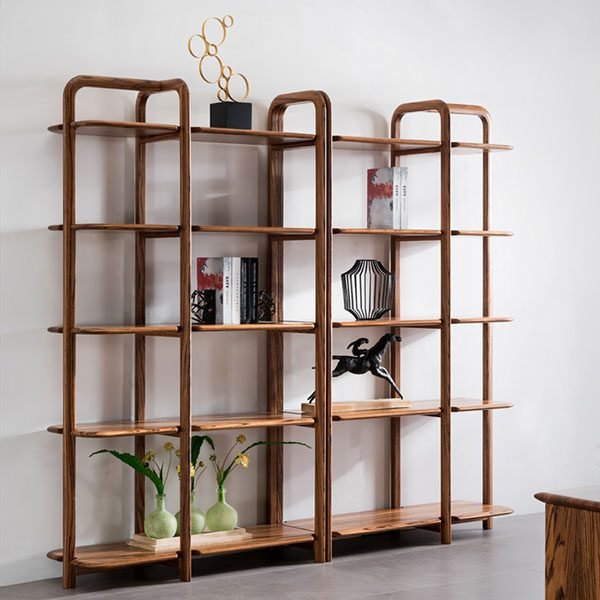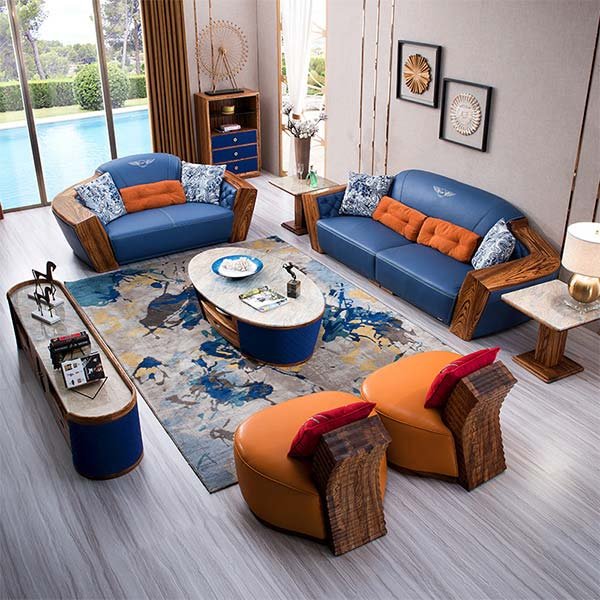“Maximize space, minimize clutter – the key to a cozy small living room!”
Utilize multi-functional furniture
Arranging furniture in a small living room can be a challenging task. Limited space requires careful planning to ensure that the room remains functional and visually appealing. One way to make the most of a small living room is to utilize multi-functional furniture.
Multi-functional furniture is a great solution for small spaces because it serves more than one purpose. For example, a sofa bed can be used as a seating area during the day and transformed into a bed for overnight guests. This type of furniture helps maximize space and provides flexibility in how the room is used.
Another option for multi-functional furniture is a coffee table with storage. This allows you to keep clutter at bay by storing items such as magazines, remote controls, and blankets inside the table. This not only helps keep the room organized but also frees up valuable floor space.
When selecting multi-functional furniture for a small living room, it’s important to consider the scale of the pieces. Choose furniture that is proportionate to the size of the room to avoid overwhelming the space. Opt for pieces that are sleek and streamlined to create a sense of openness in the room.
In addition to multi-functional furniture, consider using furniture that can be easily moved around. This allows you to reconfigure the layout of the room to suit different activities, such as entertaining guests or watching TV. Look for lightweight pieces that can be easily rearranged to create a more spacious feel in the room.
To further maximize space in a small living room, consider furniture that can be mounted on the wall. Wall-mounted shelves, cabinets, and desks can provide storage and functionality without taking up valuable floor space. This allows you to keep the room feeling open and uncluttered while still having the storage you need.
When arranging multi-functional furniture in a small living room, it’s important to create a sense of balance and flow. Avoid placing all the furniture against the walls, as this can make the room feel cramped. Instead, try floating furniture in the center of the room to create a more open and inviting space.
Consider the traffic flow in the room when arranging furniture. Make sure there is enough space for people to move around comfortably without bumping into furniture. Arrange seating areas in a way that encourages conversation and interaction, such as placing chairs facing each other or around a central focal point.
In conclusion, utilizing multi-functional furniture is a great way to maximize space in a small living room. Choose pieces that serve more than one purpose and consider the scale and mobility of the furniture to create a functional and visually appealing space. By carefully arranging multi-functional furniture, you can make the most of your small living room and create a cozy and inviting environment for you and your guests.
Create a focal point
Arranging furniture in a small living room can be a challenging task, but with the right approach, you can make the most of the space you have. One key aspect to consider when arranging furniture in a small living room is creating a focal point.
A focal point is a central element in the room that draws the eye and anchors the space. This could be a fireplace, a piece of artwork, or a statement piece of furniture. By creating a focal point, you can give the room a sense of purpose and direction.
When choosing a focal point for your small living room, consider the size and scale of the room. If you have a small space, opt for a focal point that is not too overpowering. A piece of artwork or a small fireplace can work well in a small living room, while a large piece of furniture may make the room feel cramped.
Once you have chosen a focal point, arrange your furniture around it. Place your largest piece of furniture, such as a sofa or a sectional, facing the focal point. This will help to create a sense of balance and harmony in the room.
To further enhance the focal point, consider adding accent pieces such as throw pillows, rugs, or lighting fixtures. These elements can help to draw attention to the focal point and create a cohesive look in the room.
In addition to creating a focal point, it is important to consider the flow of the room when arranging furniture in a small living room. Make sure there is enough space for people to move around comfortably and that the furniture is not blocking any doorways or pathways.
One way to improve the flow of the room is to use multipurpose furniture. For example, a coffee table with storage or a sofa bed can help to maximize space and make the room more functional.
Another tip for arranging furniture in a small living room is to use light colors and mirrors to create the illusion of space. Light colors can make the room feel larger and more open, while mirrors can reflect light and make the room appear brighter.
When arranging furniture in a small living room, it is important to strike a balance between functionality and aesthetics. Consider the needs of the people who will be using the room and choose furniture that is both stylish and practical.
By following these tips and creating a focal point in your small living room, you can make the most of the space you have and create a cozy and inviting environment for you and your guests to enjoy.
Use mirrors to create the illusion of space
Arranging furniture in a small living room can be a challenging task, but with the right techniques, you can make the most of the space you have. One effective way to create the illusion of space in a small living room is by using mirrors.
Mirrors are a great tool for making a room feel larger and more open. By strategically placing mirrors on the walls, you can reflect light and create the illusion of depth. This can make the room feel more spacious and airy.
One way to use mirrors in a small living room is to hang a large mirror on one of the walls. This will not only make the room feel bigger, but it will also help to bounce light around the space, making it feel brighter and more inviting. You can also place smaller mirrors on the walls to create a gallery wall effect, which can add visual interest and make the room feel more dynamic.
Another way to use mirrors in a small living room is to incorporate mirrored furniture. Mirrored coffee tables, side tables, and consoles can help to reflect light and create the illusion of space. Additionally, mirrored furniture can add a touch of glamour and sophistication to the room.
In addition to using mirrors on the walls and furniture, you can also use mirrored accessories to enhance the sense of space in a small living room. Mirrored trays, vases, and picture frames can all help to reflect light and make the room feel more open. You can also use mirrored accents, such as lamps or chandeliers, to add a touch of sparkle and elegance to the space.
Overall, using mirrors in a small living room is a simple and effective way to create the illusion of space. By strategically placing mirrors on the walls, incorporating mirrored furniture, and using mirrored accessories, you can make your small living room feel larger and more inviting. So next time you’re arranging furniture in a small living room, don’t forget to use mirrors to maximize the space and create a stylish and functional living area.
Заключение
Arrange furniture in a small living room by maximizing space with multifunctional pieces, using light colors to create a sense of openness, and keeping the layout open and uncluttered.



